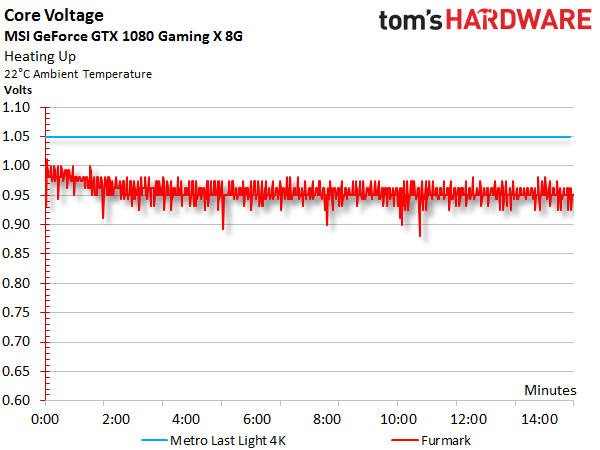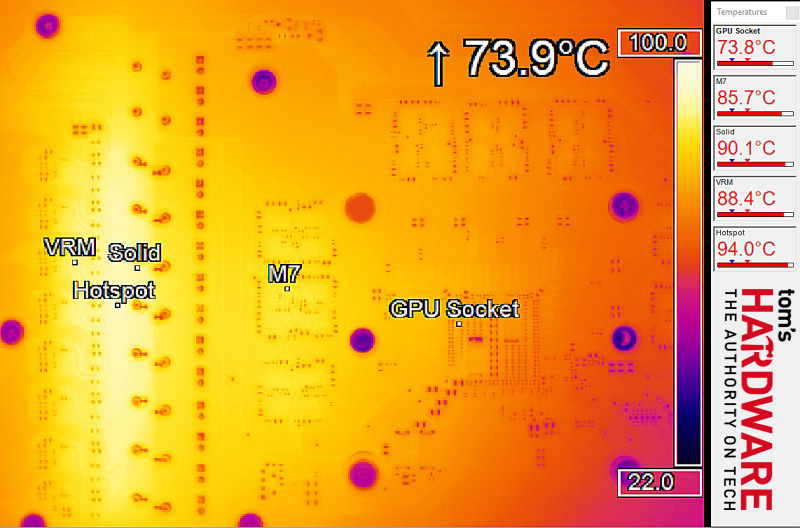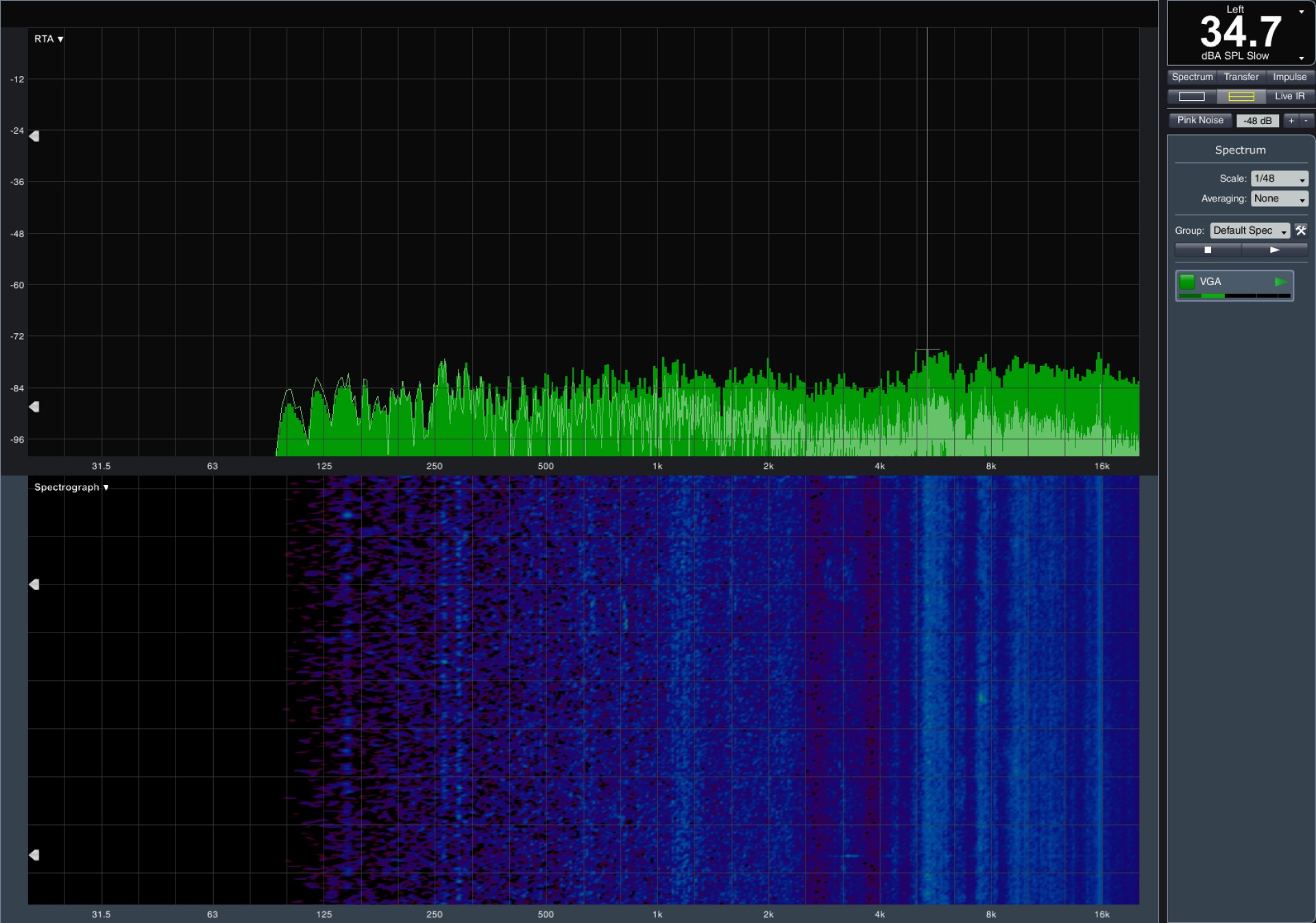Nvidia GeForce GTX 1080 Graphics Card Roundup
MSI GTX 1080 Gaming X 8G
Why you can trust Tom's Hardware
The GeForce GTX 1080 Gaming X 8G is a somewhat conservative offering from MSI. This isn't a disadvantage per se, since the company combines reliable factory overclocking with a solid list of specs that doesn't break the bank. Besides, MSI has its own premium Lightning model for enthusiasts who demand a more sophisticated graphics card. Then, at the other end of the spectrum, there are simpler/cheaper Armor 8G and Aero 8G cards. MSI's GTX 1080 Gaming X fits somewhere in the middle.
We're testing a press sample with an MSI-supplied firmware. In this version, the OC mode is active by default, resulting in approximately 20 MHz higher base and GPU Boost frequencies. Since differences between the retail model and our press version are negligible in practice, we decided not to re-flash the BIOS and instead switched the card back to standard (rather than OC) mode using MSI's bundled software. In the end, our card's clock rates match the retail version.
Technical Specifications
MORE: Best Graphics Cards
MORE: Desktop GPU Performance Hierarchy Table
MORE: All Graphics Content
Exterior & Interfaces
As with most third-party GeForce GTX 1080s, the Gaming X's shroud is made of relatively thin plastic. Under the hood, though, a massive frame provides better stability than we've seen elsewhere.
Weighing in at 38.8oz (1101g), the Gaming X 8G isn't exactly light. It measures 11.2in (28.4cm) long, five and one-third inches (13.5cm) high, one and three-eighths inches (3.5cm) wide, and occupies two full slots. The rotor blades of its double ball-bearing fans have a diameter of three and three-fourths inches (9.5cm), which explains the card's towering height.


The back of the board is covered by a single-piece plate sporting holes for ventilation. But at no point is it connected to the PCB via thermal pads, and thus it does nothing to aid cooling. Plan for an additional one-fifth of an inch (5mm) in depth beyond the plate, which may become relevant in multi-GPU configurations.
Using the card without its backplate is difficult due to well-integrated spacers. Furthermore, the plate is attached with screws that are too short to secure the frame and VRM cooler once the backplate is gone. As a result, we had to do our testing with this piece of metal in place, notably limiting our view during the IR testing.
The top of the Gaming X is dominated by an illuminated MSI logo and three visible heat pipes (two 6mm pipes and one that measures 8mm in diameter). One eight- and one six-pin power connector are positioned at the end of the card and rotated by 180°. The choice of colors adheres to MSI's black and bright red corporate design, while the Gaming X's shape matches previous-gen models.
The end of the card is completely open, which is a happy coincidence since the cooler's fins run horizontally and thus channel air toward the back and output bracket. We consider this an advantage for a couple of reasons. First, a significant amount of hot air exhausts out of the case before it has a chance to heat anything up. Second, the air that remains can more easily be directed away from the CPU and its cooler.


The rear bracket features five outputs, of which a maximum of four can be used simultaneously in a multi-monitor setup. In addition to one dual-link DVI-D connector (be aware that there is no analog signal), the bracket also exposes one HDMI 2.0b and three DisplayPort 1.4-ready outputs. Openings for airflow dot the rest of the bracket. If the often-unused DVI port had been left off and replaced by a bundled adapter, the card would have had more space for ventilation to improve cooling efficiency.
Board & Components
The 1080 Gaming X uses GDDR5X memory modules from Micron, which are sold along with Nvidia's GPU to board partners. Eight memory chips (MT58K256M32JA-100) transferring at 10 MT/s are attached to a 256-bit interface, allowing for a theoretical bandwidth of 320 GB/s.
Similar to Nvidia's reference design, the 8+2-phase power system relies on a µP9511P as its PWM controller. Unlike the Founders Edition board, however, this controller resides on the front of MSI's card rather than its back.
The PWM controller can't communicate with the VRM MOSFETs directly, so MSI utilizes PWM drivers (gate drivers) to talk to them. By using dual-, rather than single-channel MOSFETs, MSI can lay out its PCB more efficiently. And for coils, MSI goes with SFCs (Super Ferrite Chokes), which are a bit classier than the usual suspects we're accustomed to finding.
In addition, two capacitors are installed right below the GPU to absorb and equalize voltage peaks, just like Nvidia's reference implementation.
Power Results
Before we look at power consumption, we should talk about the correlation between GPU Boost frequency and core voltage, which are so similar that we decided to put their graphs one on top of the other. We'll also see that clock rate doesn't drop significantly during gaming, even after the Gaming X heats up.
After warm-up, the GPU Boost frequency falls to 1936 MHz at times. This behavior is mirrored by our voltage measurements. Although we observe up to 1.062V in the beginning, voltage later drops to 1.05V. The graph itself remains mostly flat though, just as we saw when we recorded frequency over time.
Summing up measured voltages and currents, we arrive at a total consumption figure we can easily confirm with our test equipment by monitoring the card's power connectors.
As a result of Nvidia's restrictions, manufacturers sacrifice the lowest possible frequency bin in order to gain an extra GPU Boost step. So, the GTX 1080 Gaming X's power consumption is disproportionately high as it idles at 253 MHz. The consequences of this are apparent in the following table:
| Power Consumption | |
|---|---|
| Idle | 15W |
| Idle Multi-Monitor | 17W |
| Blu-ray | 18W |
| Browser Games | 114-142W |
| Gaming (Metro Last Light at 4K) | 220W |
| Torture (FurMark) | 251W |
Now let's take a more detailed look at power consumption when the card is idle, when it's gaming at 4K, and during our stress test. The graphs show the distribution of load between each voltage and supply rail, providing a bird's eye view of variations and peaks:








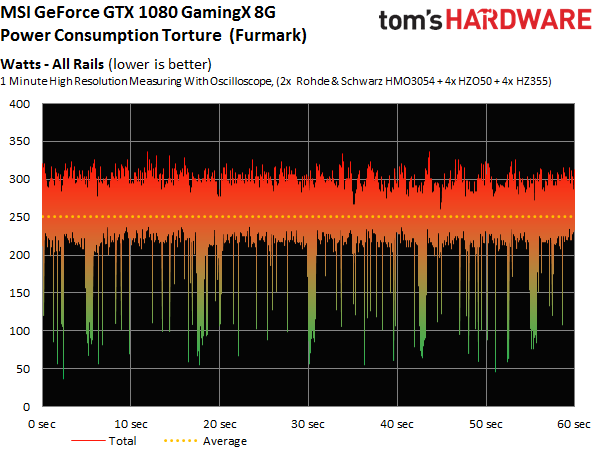
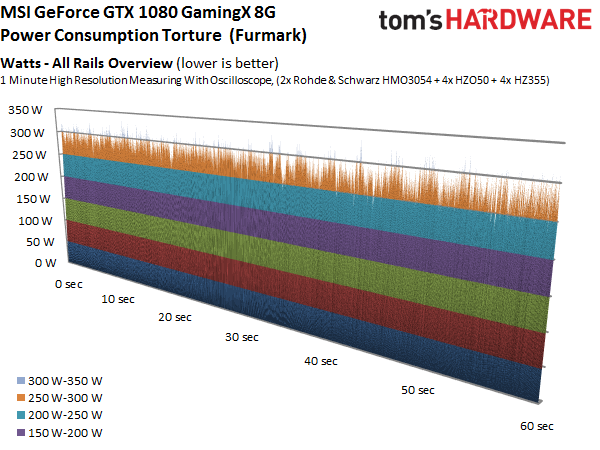


Temperature Results
MSI put its focus on the GeForce GTX 1080 Gaming X 8G's cooling system, and it shines as a result. A solid frame covers almost the entire board (or at least the part not already covered by the VRM cooler, which is implemented as a big plate with fins).
There are thermal pads between the memory modules and that frame, along with the VRMs and cooling plate, to facilitate heat transfer between them. Really, we would have preferred a thinner and more efficient design since MSI's fans spin slowly, limiting airflow somewhat.
The massive cooler employs horizontally-oriented fins, four nickel-plated .25in (6mm) heat pipes, and a one-third-inch (8mm) pipe. The direction they face is more or less irrelevant since they consist of sintered composite material. The pipes all come together over a nickel-plated block.
Measuring roughly 158°F (70°C) during our gaming loop and 162°F (72°C) during our stress test in a closed case, the cooling system does its job while keeping noise levels moderate.
As mentioned previously, we had to run our tests with the backplate in place. Fortunately, an opening in the plate happens to be right above one of the memory modules, which is positioned between the VRMs and GPU. The 187°F (86°C) we measured is uncomfortably hot, especially since the temperatures in a closed case are typically higher.
During the stress test, our thermal readings approach a dangerous 207°F (97°C). In a closed case, that value could easily rise above 212°F (100°C). This does pose a risk to the memory modules, since those temperatures exceed their specs. Perhaps that explains why MSI's website offers an updated BIOS with OC mode active and a much lower power target.
We thought it'd be prudent to probe a little deeper, since the temperatures we were seeing were potentially problematic. After finding a set of spare screws that fit MSI's frame with the backplate removed, we were able to take the readings we originally wanted. The following image shows that same memory module (M7), confirming our prior readings.
This is on the edge of what we consider acceptable. The measurements started to look critical when we ran FurMark, even though the temperatures were a little lower without the backplate.
Of course, it's doubtful that you'd "play" FurMark for any amount of time. But exercise caution before hitting MSI's GeForce GTX 1080 Gaming X with a heavy load for extended periods.
Sound Results
Due to the high power target and significantly higher power consumption, both curves diverge.
MSI's well-implemented hysteresis, which reliably prevents multiple on/off cycles, is clearly visible. In addition, the start-up speed is chosen in such a way that the fans should continue to start reliably, even as they age. The same is true for turning the fans off once the card cools down.
When the card is idle, its semi-passive profile keeps the fan from spinning. Thus, there isn't any reason to gather readings.
Since the fans are the same one MSI uses on its GeForce GTX 1070 Gaming X 8G, it makes sense that the 1080 would be a bit louder due to the extra heat. The difference is minor though; the measured 34.7 dB(A) is completely acceptable.
All told, the 1080 Gaming X does well throughout our acoustic testing. It only falters slightly when it comes to cooling the VRM. If the company configured its fan curve a little more aggressively, the card would probably stay below 36 dB(A) and cool the memory modules a bit more effectively.
MSI GTX 1080 Gaming X 8G
Reasons to buy
Reasons to avoid
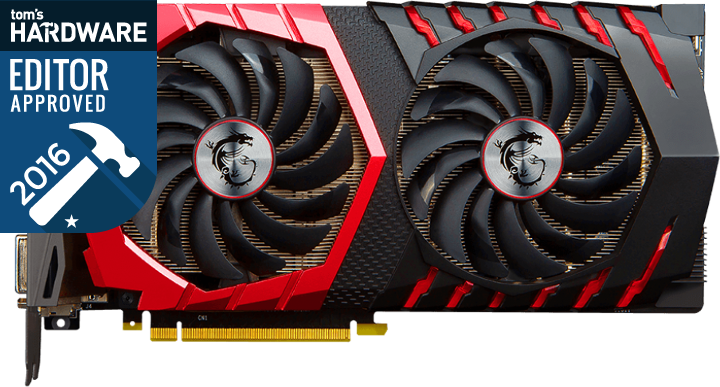
MORE: Best Deals
MORE: Hot Bargains @PurchDeals
Current page: MSI GTX 1080 Gaming X 8G
Prev Page Gigabyte GTX 1080 Xtreme Gaming Next Page MSI GTX 1080 Sea HawkGet Tom's Hardware's best news and in-depth reviews, straight to your inbox.

Igor Wallossek wrote a wide variety of hardware articles for Tom's Hardware, with a strong focus on technical analysis and in-depth reviews. His contributions have spanned a broad spectrum of PC components, including GPUs, CPUs, workstations, and PC builds. His insightful articles provide readers with detailed knowledge to make informed decisions in the ever-evolving tech landscape
-
ledhead11 Love the article!Reply
I'm really happy with my 2 xtreme's. Last month I cranked our A/C to 64f, closed all vents in the house except the one over my case and set the fans to 100%. I was able to game with the 2-2.1ghz speed all day at 4k. It was interesting to see the GPU usage drop a couple % while fps gained a few @ 4k and able to keep the temps below 60c.
After it was all said and done though, the noise wasn't really worth it. Stock settings are just barely louder than my case fans and I only lose 1-3fps @ 4k over that experience. Temps almost never go above 60c in a room around 70-74f. My mobo has the 3 spacing setup which I believe gives the cards a little more breathing room.
The zotac's were actually my first choice but gigabyte made it so easy on amazon and all the extra stuff was pretty cool.
I ended up recycling one of the sli bridges for my old 970's since my board needed the longer one from nvida. All in all a great value in my opinion.
One bad thing I forgot to mention and its in many customer reviews and videos and a fair amount of images-bent fins on a corner of the card. The foam packaging slightly bends one of the corners on the cards. You see it right when you open the box. Very easily fixed and happened on both of mine. To me, not a big deal, but again worth mentioning. -
redgarl The EVGA FTW is a piece of garbage! The video signal is dropping randomly and make my PC crash on Windows 10. Not only that, but my first card blow up after 40 days. I am on my second one and I am getting rid of it as soon as Vega is released. EVGA drop the ball hard time on this card. Their engineering design and quality assurance is as worst as Gigabyte. This card VRAM literally burn overtime. My only hope is waiting a year and RMA the damn thing so I can get another model. The only good thing is the customer support... they take care of you.Reply -
Nuckles_56 What I would have liked to have seen was a list of the maximum overclocks each card got for core and memory and the temperatures achieved by each coolerReply -
Hupiscratch It would be good if they get rid of the DVI connector. It blocks a lot of airflow on a card that's already critical on cooling. Almost nobody that's buying this card will use the DVI anyway.Reply -
Nuckles_56 Reply18984968 said:It would be good if they get rid of the DVI connector. It blocks a lot of airflow on a card that's already critical on cooling. Almost nobody that's buying this card will use the DVI anyway.
Two things here, most of the cards don't vent air out through the rear bracket anyway due to the direction of the cooling fins on the cards. Plus, there are going to be plenty of people out there who bought the cheap Korean 1440p monitors which only have DVI inputs on them who'll be using these cards -
ern88 I have the Gigabyte GTX 1080 G1 and I think it's a really good card. Can't go wrong with buying it.Reply -
The best card out of box is eVGA FTW. I am running two of them in SLI under Windows 7, and they run freaking cool. No heat issue whatsoever.Reply
-
Mike_297 I agree with 'THESILVERSKY'; Why no Asus cards? According to various reviews their Strixx line are some of the quietest cards going!Reply -
trinori LOL you didnt include the ASUS STRIX OC ?!?Reply
well you just voided the legitimacy of your own comparison/breakdown post didnt you...
"hey guys, here's a cool comparison of all the best 1080's by price and performance so that you can see which is the best card, except for some reason we didnt include arguably the best performing card available, have fun!"
lol please..





